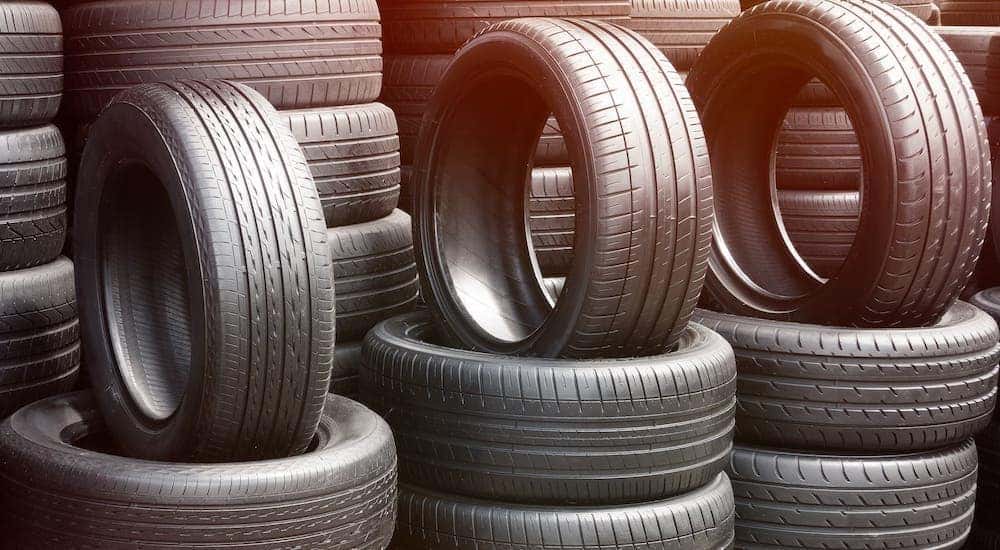Budget-friendly Discount Tires Morris IL: Unsurpassable Costs, Quality Assured
Budget-friendly Discount Tires Morris IL: Unsurpassable Costs, Quality Assured
Blog Article
Tire Solution: Understanding Tire Pressure Monitoring Solutions
Comprehending Tire Pressure Tracking Equipments (TPMS) is an essential aspect of preserving ideal automobile performance and safety on the road. With innovations in automotive innovation, TPMS has actually ended up being a conventional function in contemporary cars, supplying real-time info on tire pressure levels.

Relevance of TPMS
The significance of Tire Stress Tracking Solutions (TPMS) lies in their capacity to enhance lorry security and efficiency with real-time surveillance of tire stress degrees. Keeping the appropriate tire stress is critical for making certain ideal handling, braking, and general security of a vehicle. TPMS provides chauffeurs with immediate comments on any kind of overinflated or underinflated tires, permitting prompt modifications to be made.
Components of TPMS
Consisting of various vital elements, a Tire Pressure Surveillance System (TPMS) functions as an innovative safety attribute in modern lorries. The primary components of a TPMS include sensing units, a control module, and a warning indicator. Sensors are generally situated in the tire valve stem or attached to the wheel assembly, where they measure tire pressure and transfer information to the control component. The control component processes this details and activates a warning if it detects substantially low stress in any of the tires. The caution indication, usually an icon on the dashboard, alerts the vehicle driver to check the afflicted tire or tires. Some progressed TPMS models additionally show the actual tire stress readings for each and every tire, supplying chauffeurs with real-time information to make sure optimal tire efficiency and safety. By checking tire pressure continuously, TPMS assists prevent mishaps, lowers tire wear, and improves gas efficiency, making it an essential part for lorry safety and efficiency.
Sorts Of TPMS

On the other hand, indirect TPMS depends on the vehicle's wheel speed sensing units to monitor tire stress. This system detects underinflation by contrasting the rotational rates of the wheels. Indirect TPMS is less costly than direct TPMS, as it utilizes existing sensing units within the lorry.
While direct TPMS supplies a lot more accurate analyses, indirect TPMS is simpler in layout and commonly calls for less upkeep. Both systems have their benefits and limitations, and the option between them typically relies on address factors such as cost, lorry make, and individual preference. Recognizing the distinctions between these 2 kinds of TPMS can help view it car owners make educated decisions concerning tire maintenance and security.
TPMS Maintenance Tips
Effective upkeep of TPMS is necessary for ensuring optimum performance and security of your lorry. Regularly inspecting the TPMS sensing units for any damages or corrosion is vital. Ensure that the sensing units are complimentary and clean from particles that can hinder their performance. In addition, it is recommended to examine the sensor batteries periodically and replace them as needed to assure accurate readings. Conduct routine checks on the tire pressure degrees and contrast them with the TPMS analyses to ensure they are regular. Alter the system adhering to the maker's standards if there are any type of disparities. During tire rotation or substitute, make sure that the TPMS parts are dealt with very carefully to prevent any kind of prospective damage. If the TPMS advising light illuminates on the control panel, address the problem quickly by checking the tire stress and the general system for any faults. By adhering to these maintenance suggestions, you can lengthen the lifespan of your TPMS and improve the safety of your driving experience.
Advantages of Appropriate Tire Pressure
Keeping appropriate tire stress, as highlighted in TPMS Upkeep Tips, is crucial for gaining the many benefits associated with optimum tire stress degrees. In addition, appropriate tire stress makes sure even tire wear, extending the life expectancy of the tires and advertising more secure driving problems. In conclusion, the benefits of correct tire stress go past simply tire longevity; they incorporate boosted fuel efficiency, boosted security, much better car performance, and total driving convenience.
Conclusion
To conclude, understanding tire stress monitoring systems (TPMS) is important for maintaining optimum tire pressure and making certain automobile safety moved here and security. By recognizing the value of TPMS, recognizing with its parts, understanding the different kinds readily available, adhering to proper upkeep suggestions, and understanding the advantages of keeping correct tire pressure, chauffeurs can boost their driving experience and lengthen the lifespan of their tires. Appropriate tire pressure is vital to effective and risk-free lorry operation.

Report this page